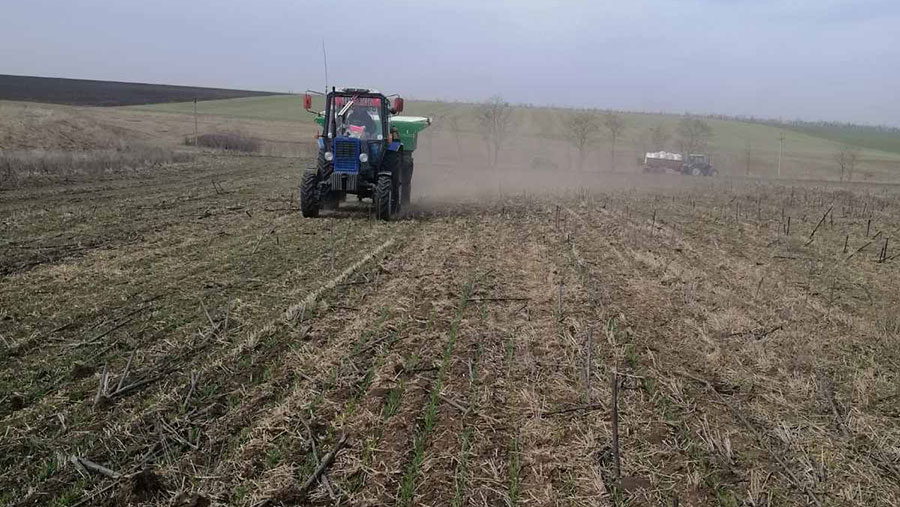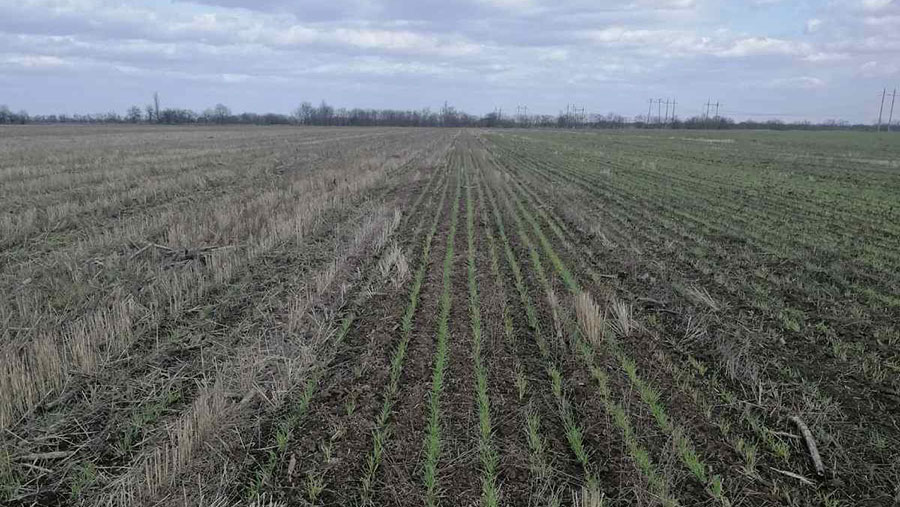Ukraine’s cropping prospects improve after Russian retreat
 © Mike Lee
© Mike Lee Prospects for Ukraine’s spring sowing area have improved after Russian forces retreated from the north and west of the country, say analysts.
The Russian withdrawal from Ukraine’s northern regions and no further advance beyond Mykolaiv in the South has freed up about 5m hectares of land that will be farmed to a greater of lesser extent, according to Black Sea agronomist Mike Lee.
Mr Lee, director of Green Square Agro Consulting (Twitter: @GreenSquareAC), said: “It has now been confirmed that the Russians have completely pulled out of the northern oblasts of Zhytomyr, Kyiv, Chernihiv, and Sumy.
See also: How Ukraine war will impact its farming – agronomist’s view
“This is about 4.9m hectares of arable land [17% of Ukraine’s total arable land]. Not all of that would have been at risk or occupied. But it does mean this land is now back online.
“That said, we have seen some of the atrocities coming out of that area and clearly some of that land is not going to be available to farm for some time.”
Good weather
In a normal year, Ukrainian farmers would be feeling upbeat about the current weather, said Mr Lee, which he described as “very good”.
“The winter wheat came out of the winter in reasonable condition. It is receiving its fertiliser,” he added. “There was a bit of dryness in the South West, but that seems to have been alleviated.”
However, Mr Lee tempered this optimism with concerns about what could unfold in southern Ukraine.
“If Russian troops advance beyond Mykolaiv and into Odesa, that’s another 3.4m hectares [12% of Ukraine’s agricultural land] at risk. What you have gained in the North, you could lose in the South.
“As of this moment, things are looking slightly more optimistic than they did a week ago, but that could change quickly.”
Beyond this planting stage, he said it was too early to gauge what could happen by harvest due to the uncertainty around the war.
Mr Lee is currently forecasting production across all crops will be 30-40% down on a normal year.

© Mike Lee
Logistical difficulties
Carl Atkin, director of agribusiness management firm and consultancy Terravost, which advises Ukrainian farming businesses, said Russia’s retreat from Ukraine would allow farmers to plant more crops and had boosted harvest prospects for 2022.
“While the sown crop area will undoubtedly be down, and logistical difficulties remain, the partial withdrawal of Russian troops from some areas of the North and East could mean the effect on the Ukrainian spring seeding area might not be quite as bad as first feared,” he said.
Ukraine agriculture ministry upgrades spring planting prospects
Ukraine’s agriculture ministry has projected spring crop plantings at 13.4m hectares – 3.5m hectares less than in 2021.
This is a more optimistic assessment than the one delivered by former Ukrainian farm minister Roman Leshchenko in March, who warned Ukraine’s spring cropping area could be more than halved.
On 4 April, farm minister Mykola Solsky said spring planting was under way in Ukraine and farmers were drilling wheat and barley, but had not started maize, sunflowers and other crops.
Mr Solsky predicted there could be problems with logistics in harvesting, transporting and processing the crops later in the season.
Before the war, Ukraine exported 4-5m tonnes of grain through Black Sea ports each year. But Mr Solsky said it will be “much less” this year, as grain shipments out of Ukraine halted when Russia invaded the country in late February.
“We can’t export the amount of grain that we usually sell abroad. It’s more than 20m tonnes of maize, sunflower seeds, soya beans, wheat and processed products,” said Mr Solsky.
“It’s already influenced world prices. Last month everyone could see it clearly and feel it. It has led to an increase in world food prices.”
However, some grain parcels are being transported on roads and railways from western Ukraine to Poland, Hungary, Romania and Slovakia. “Last month, we sent about 800,000t and we will increase our monthly capacity,” said Mr Solsky.
Grain shipments have restarted from Romania and Bulgaria, but are low compared with Ukrainian and Russian cargoes.
